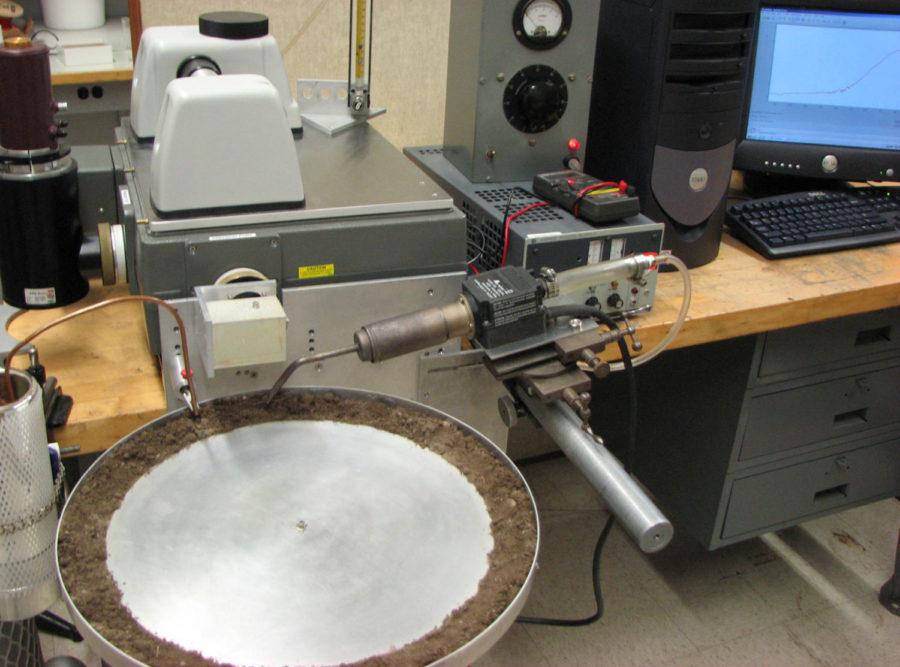Iowa State scientists create new method of measuring nitrate
ISU scientists measuring nitrates in soil with a unique infrared sensor system, opening the possibility of determining the level of this nutrient in real time as fertilizer is being applied to fields.
March 6, 2014
A team of scientists at Iowa State have used a new infrared sensor system to measure nitrates in soil.
Nitrates can be produced from the runoff from nitrogen fertilizers and cause harmful effects in nearby water supplies and can affect crop production, so monitoring nitrate levels is a top priority for farmers and the community.
The technology, invented in the Ames Laboratory, compares traditional measurements to the efficiency of the new data.
The sensor system allows intermediate data to be measured and will create opportunities for determining the level of nitrates in the soil.
Eventually farmers could use the tool to collect data before harvest season. The tool will replace hands-on sampling and allow the infrared light to measure the nitrate count.
The infrared light measures the light emissions on the surface of the soil.
“The new tool will help improve proficiency of corn production,” said David Laird, professor of agronomy.
Currently, farmers spread a uniform amount of fertilizer on the soil. If the tool is found successful, it will tell the farmers specific areas that need more or less nitrate.
“The current method is a strenuous process of sampling in the lab and doing a chemical analysis of the soil in the lab,” said John McClelland, associate scientist of biochemistry and biophysics and molecular BIO-AGLS. “The process takes time and money.”
The infrared light measures the nitrates without taking soil to the lab, eliminating the need for field samples.
The sensor attaches to the tractor and will create more efficiency, but it will also be small enough to hold.
“The goal is to have the sensor go through the field [in] real time,” McClelland said.
Nitrates are potentially dangerous for the environment if washed into waterways. When nitrates enter big bodies of water, the ecosystem becomes unbalanced. Greenhouse gasses are a result of nitrate runoff into those bodies of water.
Knowing the exact amount of nitrate for farmers to place in certain areas will help decrease the amount of excess nitrates that wash away.
“The sensor will monitor the amount of nitrate and will help reduce nitrate runoff,” said Roger Jones, associate scientist of biochemistry and biophysics and molecular BIO-AGLS.
Knowing the exact amount of nitrate in the soil will also help crop production and will create a healthier field and crops.
The future goal is to test a varied groups of soil and hopefully create a marketable tool.
“The biggest challenge is overcoming the fact that the relevant range is quite low,” Jones said.
The objective is to test a variety of soils and determine the diversity of the infrared spectroscopy. The research team wants to gather more funding for research and development. Once the data is analyzed, the team will publish a paper explaining their findings and ideas.
Four researchers work on the project: McClelland and Jones work with developing the equipment, and Laird and a graduate student work on the agronomy side of the research.

















